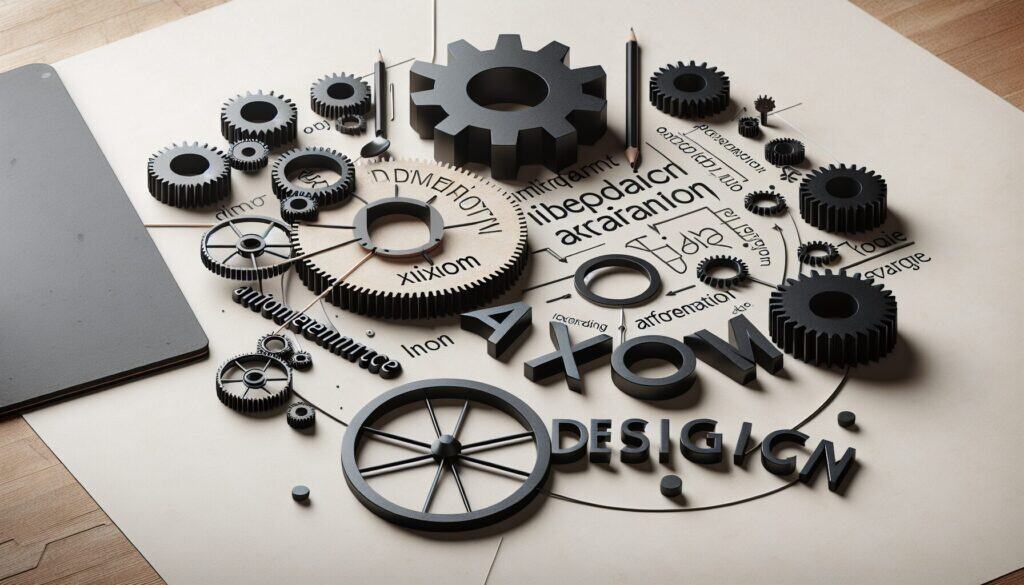A systematic design methodology based on two fundamental axioms: the Independence Axiom (maintain independence of functional requirements) and the Information Axiom (minimize information content/complexity).
- Methodologies: Engineering, Quality
Axiomatic Design

Axiomatic Design
- Design for Additive Manufacturing (DfAM), Design for Manufacturing (DfM), Design for Six Sigma (DfSS), Design Optimization, Design Principles, Design Process, Lean Manufacturing, Quality Function Deployment (QFD), Systems Modeling Language (SysML)
Objective:
How it’s used:
- Designers decompose a design into functional requirements (FRs), design parameters (DPs), and process variables (PVs), aiming to create a design where each FR can be adjusted by a unique DP without affecting other FRs, and where the design is as simple as possible.
Pros
- Provides a structured and logical approach to design; aims for robust and less complex designs; helps identify and resolve design conflicts early.
Cons
- Can be conceptually challenging to apply correctly; may lead to overly simplistic designs if information content is minimized too aggressively without considering other factors; requires a deep understanding of the system being designed.
Categories:
- Engineering, Product Design
Best for:
- Creating robust and efficient designs by ensuring functional requirements are independent and information content is minimized.
Axiomatic Design methodology is widely applied in various fields including automotive, aerospace, consumer electronics, and medical device design, where maintaining high standards of performance and reliability is crucial. Engineers and product designers utilize this framework during the conceptual and detailed design phases of development projects, ensuring that each functional requirement aligns distinctly with a design parameter, which aids in minimizing unnecessary dependencies and potential conflicts. For instance, in the automotive industry, this approach can be used to design safety features where each requirement, such as crashworthiness or airbag deployment, is addressed without compromising other components of the vehicle system. Participants in this process often include cross-functional teams consisting of design engineers, manufacturing engineers, quality assurance experts, and customer representatives who contribute to defining the functional requirements based on user needs and regulatory standards. The structured nature of Axiomatic Design allows teams to systematically explore alternatives, facilitating a clear decision-making process that enhances communication and collaboration. The methodology also emphasizes the importance of simplicity in design, as less complexity not only reduces costs but also streamlines manufacturing processes and enhances user experience, leading to higher customer satisfaction. The iterative aspect of evaluating and refining design parameters against functional requirements encourages continuous improvement, making it a valuable tool for organizations looking to innovate while maintaining efficiency and robustness in their product offerings.
Key steps of this methodology
- Identify functional requirements (FRs) based on customer needs and market demands.
- Decompose each FR into design parameters (DPs) that will achieve the required functionality.
- Establish relationships between FRs and DPs to ensure each FR is satisfied independently by a unique DP.
- Assess the information content of the design to minimize complexity and improve robustness.
- Iteratively refine the design through simulations and prototyping to validate relationships and effectiveness.
- Optimize design parameters and confirm that they meet performance criteria while maintaining independence of FRs.
- Document the design process and outcomes for future reference and improvements.
Pro Tips
- Leverage simulation tools to predict design behavior under varying parameters, facilitating early identification of potential conflicts.
- Apply robust design techniques to optimize DPs for resilience against variations in manufacturing and operational conditions.
- Document the rationale behind FRs and DPs decisions thoroughly to maintain clarity and facilitate future redesign iterations.
To read and compare several methodologies, we recommend the
> Extensive Methodologies Repository <
together with the 400+ other methodologies.
Your comments on this methodology or additional info are welcome on the comment section below ↓ , so as any engineering-related ideas or links.
Historical Context
1949
1950
1950
1960
1960
1960
1960
1940
1950
1950
1958
1960
1960
1960
1960
(if date is unknown or not relevant, e.g. "fluid mechanics", a rounded estimation of its notable emergence is provided)















Related Posts
Monte Carlo Simulation
Model-Based Testing
Model Checking
Mixed Methods Research
Mistake Proofing (Poka-Yoke)
Mission Profile Testing